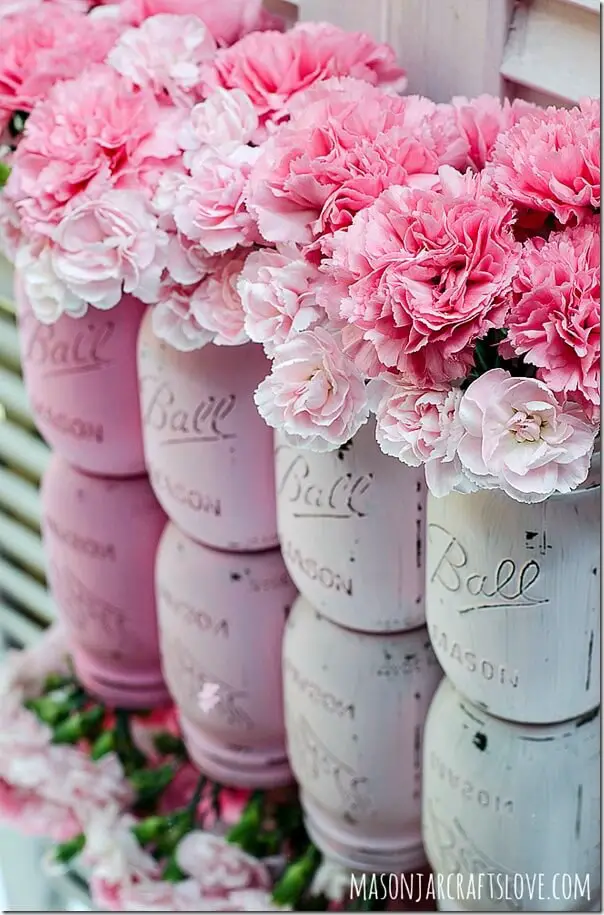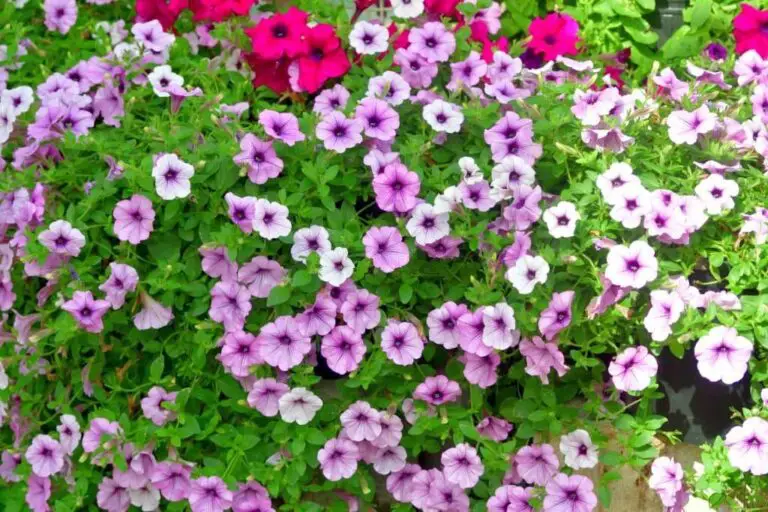15+ Best Shabby Chic Interior Design Decor Ideas (2024)
As we often dispose of old items at flea markets or landfills, it’s surprising to think that shabby furnishings have become a staple in many modern apartments. With the blessing of interior designers, the ‘shabby chic’ style has gained popularity over the years. This aesthetic was first popularized by British designer Rachel Ashwell in the 1980s, who initially restored old furniture for her own home before turning it into a successful online business.
The trend took off, with people seeking out soft, light-colored furniture and accessories to add an touch of nostalgia and whimsy to their spaces. Today, shabby chic has evolved to include a wide range of items, from tea sets to textiles, offering endless possibilities for those looking to add a unique touch to their homes.
Greetings from the last century

In this unique space, a vintage suitcase serves as an unconventional coffee table in front of a sleek modern sofa. The room’s focal point is a plush rocking chair inherited from grandmother, now adorned with a soft checkered rug and positioned in front of a cutting-edge plasma TV. Meanwhile, the bathroom presents an intriguing juxtaposition, where a rusty iron rack hangs beside a gleaming ultra-modern steel heating radiator.
This eclectic mix of old and new is further accentuated by a mechanical alarm clock proudly displayed alongside designer perfume bottles, toiletries, and other modern luxuries. The room’s decorative aesthetic is completed with a repurposed Coca-Cola bottle serving as a flower vase, exemplifying the charming negligence that defines the ‘shabby chic’ style.
In a world of comfort

In today’s modern apartments, it’s easy to get caught up in the convenience and sleek design. With high-tech gadgets, sliding doors and windows, and compact furniture, life is a breeze. Just press a button on your remote control, and your sofa transforms into a bunk bed, while your wardrobe becomes a computer desk. It’s not hard to see why people love the space-saving benefits of modern design, which leaves plenty of room for creativity and minimalizes cleaning tasks.
The abundance of open surfaces – think parquet, tiles, mirrors, and glass tables – only adds to the ease of living. However, some experts argue that this perfect environment can be a bit too much. When everything is so polished and precise, it’s easy to feel like you’re living in a hospital rather than a home. In our fast-paced world, people crave a sense of comfort, warmth, and refuge from the stressors of daily life.
That’s why many people are drawn to shabby chic styles – they long for a cozy, inviting space that feels like a sweet haven, where memories can be made and cherished.
Do it yourself


For a shabby chic interior to truly shine, it’s essential to strike the perfect balance between beauty and imperfection. This unique design trend combines vintage charm with modern flair, creating a look that’s both nostalgic and fresh. However, achieving this aesthetic doesn’t require scouring dusty attics or thrifting through second-hand stores. Instead, get creative and put your own spin on things!
Upcycle old items into new treasures – like decorating a pillowcase with intricate ruffles and embroidery, or transforming cardboard into a one-of-a-kind cosmetic box. You can even give an old wooden secretaire a makeover by painting it ivory white and distressing the edges with candle wax or emery paper. The end result is a beautifully imperfect piece that’s uniquely yours.
An unobtrusive taste of kitsch

In the kitchen, a stylish accent can be achieved by incorporating a silver tray hung on the wall, serving as a magnetic board where memos and recipes are pinned. This unconventional approach not only adds a touch of elegance but also fosters creativity. Similarly, the hallway floor can be transformed with a rug crafted from repurposed materials, such as old items. The possibilities are endless.
Meanwhile, the ‘shabby- chic’ style takes center stage, characterized by gentle pastel hues like white, cream, blue, pink, and beige. This aesthetic is further enhanced by artistic paintings adorning separate sections of the ceiling and walls, featuring sentimental motifs like roses, angels, and floral patterns.
The result is a non-aggressive yet endearing kitsch that evokes a sense of home – a haven where we can retreat after a long day, surrounded by warmth and comfort, as trend analysts suggest. In terms of color palette, furniture and decorative elements predominantly feature soft, pastel shades ranging from white to pale pink, pale blue, and pale green.
Style characterization

The shabby chic style can be distilled into a few defining characteristics. At its core, it’s all about embracing soft, gentle hues – think pale pinks, baby blues, and creamy whites. This colour palette is then amplified by the use of worn, distressed decor pieces that have been lovingly aged with multiple coats of paint. The style also relies heavily on ornate, pastoral motifs – delicate florals and angelic details are staples of this aesthetic.
Geometric patterns are eschewed in favour of subtle stripes, adding a touch of understated elegance to the overall look. Practicality is key here too – furniture covers and handmade decor are encouraged, as long as they fit with the cohesive, uniform style that shabby chic demands. After all, the goal is to create a space that feels warm, inviting, and authentically charming.
Shabby chic interior basics


In shabby chic design, ceilings are often intentionally distressed to resemble a peeling whitewash effect, with a subtle grayish hue that harmonizes with the overall aesthetic. This unique ceiling treatment is complemented by stucco moldings in classical styles, also subtly aged to blend seamlessly with the rest of the space.
Floors in shabby chic settings typically feature well-worn parquet or old-fashioned wooden flooring designed to mimic natural wood’s imperfections.
The distressed finish adds a layer of authenticity to the overall design.
Walls in this style often showcase a weathered, rough-textured finish, either through deliberate painting or the use of special wallpaper that recreates the look of aged plaster or peeling paint. Alternatively, smooth wallpaper with ornate designs featuring motifs like roses, angels, or candelabra can also be used to great effect.
Additionally, stucco decorations such as pediments, medallions, moldings, and rosettes add a touch of elegance.
Furnishings in shabby chic interiors typically consist of genuine antique pieces from the 19th century or earlier, including vintage clocks, radios, telephones, and sculptures. Faded paintings in old frames, candelabra, and other unique items that evoke past eras can also be found in these spaces. To add a touch of whimsy, flowers are often arranged in aged containers or boxes.
What sets shabby chic apart from other design styles is its eclectic nature, where decor items can span various styles, including country and classical influences. The subtle aging process of luxury items adds a layer of personality and uniqueness that’s hard to replicate with mass-produced furniture.
Furniture Choosing

When it comes to vintage or antique furniture, think opulence and sophistication. Pieces inspired by the Rococo and Baroque styles are particularly sought after, characterized by intricate carvings and ornate details. The presence of convex or carved ornaments is highly encouraged, as long as they’re accompanied by a sense of refined elegance. It’s not just about the piece being old, but also having a luxurious quality to it, even if it has been worn down by time.
To find such treasures, start your search at reputable online marketplaces like nyfurnitureoutlets. com. While some collectors may focus on pieces with a distressed or ‘scuffed’ look, others will prioritize antique furniture that exudes elegance and refinement, often featuring ornate decorations such as roses or angels, typically in a classic white finish.
Related Posts
Elevate your living space by embracing the versatility of rattan dressers. With a few creative styling tricks, you can transform this classic piece into a design statement that exudes glamour and sophistication. Start by experimenting with patterns – pair bold geometric shapes with delicate florals or contrasting textures to add depth and visual interest.
Don’t be afraid to mix and match colors either; rich jewel tones like emerald green or sapphire blue can create a striking contrast against the natural warmth of the rattan. If you’re looking for inspiration, consider incorporating retro rugs into your decor – their playful patterns and vibrant hues are the perfect complement to a stylish rattan dresser.






